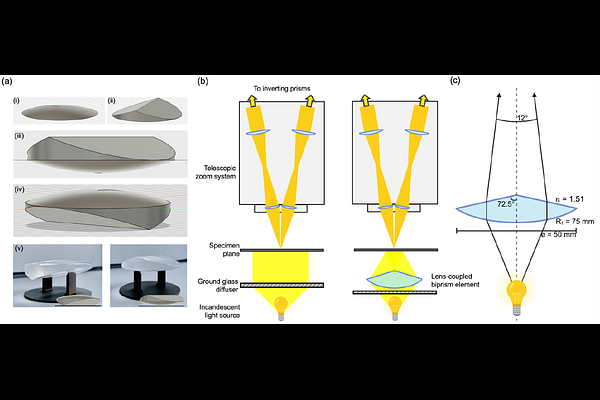A large 3D-printed integrated lens-biprism element enhances contrast in transmission stereomicroscopy

A large 3D-printed integrated lens-biprism element enhances contrast in transmission stereomicroscopy
Rooney, L. M.; Amos, W. B.; Foylan, S.; Christopher, J.; Butterworth, C.; Bauer, R.; Gould, G. W.; McConnell, G.
AbstractStereomicroscopes are routinely used across disciplines for material and surface characterisation due to their simplicity of use and minimal specimen preparation requirements. However, the stereomicroscope transillumination design is suboptimal, as a single incident beam at the specimen plane is shared and transmitted via two laterally offset detection axes. This flaw limits life science applications due to the transparent nature of samples which results in poor contrast images. We use a single additional element in the illumination path to correct the illumination uniformity across the field of view and, by doing so, enhance image contrast and facilitate detection of refractive structures in transparent biological specimens. We designed and fabricated an integrated lens-biprism element using low-cost, consumer-grade 3D printing methods and consumables. This 3D printed lens-biprism distributed diverging rays from a single incandescent light source into two parallel beams that converged at the specimen plane and transmitted through the respective left and right detection axes of a stereomicroscope. This improved transillumination setup increased the image contrast by up to 67.62% compared to the conventional stereomicroscope setup. We demonstrated the benefit of the lens-biprism element by visualising dynamic cellular events in live tissue and discerning refractive structures more easily in transparent specimens.